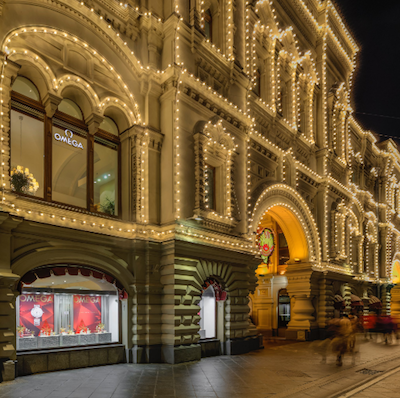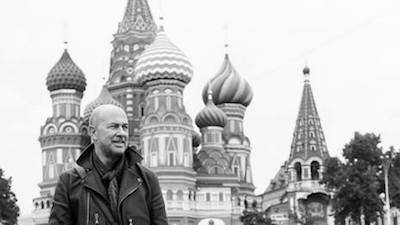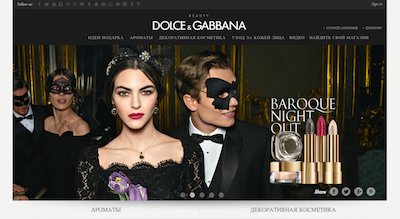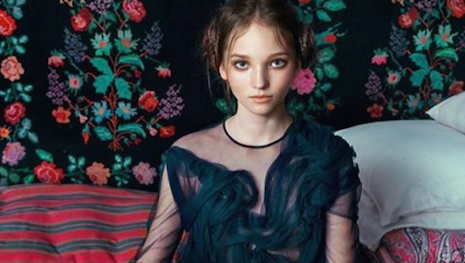Once a high-growth market for the luxury sector, Russia’s geopolitical and economic climate have deflated spending in the country, but a new report from ContactLab and Exane BNP Paribas shows the nation is set for a comeback.
Sanctions, the ruble’s lowered value and declining oil prices, consumer confidence and consumption fell in recent years, with luxury spending half of what it was at its highest. A number of developments, including a lowered unemployment rate and the possible removal of sanctions as leadership changes in France and the United States may help brighten the luxury market in Russia and the industry’s global outlook next year.
"Luxury industry projections are quite positive for 2017 given that the exit from 2016 is positive," said Marco Pozzi, senior advisor at ContactLab. "During the second semester of 2016, Chinese and Russian purchases started to rebound, with a shift from foreign shopping to domestic purchases for both nationalities."
Russian revival
Through the 1990s, Russia was the main growth driver of the luxury industry. In its heyday, Russia accounted for more than 6 percent of global luxury spending.
Today China is the sector’s main source of growth, with more than a third of luxury spending coming from the populous nation. If China sees even low double digit growth next year, the global luxury market will see at least a 3 percent bump.
If Russia has its expected revival, worldwide luxury growth will rise an additional 0.5 to 1 percent.
ContactLab compared luxury brands’ retail presence in Russia, and found that Brunello Cucinelli has 4.9 percent of its store network within the nation, the greatest portion of any company studied. The Italian cashmere brand was followed by Swatch Group, the parent of Breguet and Omega that has 105 stores in the country, and Prada.

Omega within Gum department store in Moscow
Among public companies, Ulysse Nardin, Breguet and Zenith have the greatest percentage of their stores in Russia.
Aside from their purchases at home, foreign purchases by Russian consumers are rising.
Euromonitor also noted the potential Russia holds. Devalued currency rates in Russia have spurred an uptick in tourism and the purchase of luxury accessories within the market.
The market researcher attributes the positive effect on the Russian market to a number of factors including fewer residents traveling abroad to buy luxury goods, as well as an influx of foreign tourists due to lower travel costs. Although Russia’s luxury sector has had its share of highs and lows, many brands have worked to capitalize on its potential (see story).
ContactLab's report finds that luxury stores are congregated in Moscow and St. Petersburg, with only a handful of studied brands open in second tier cities.
For instance, U.S. fashion label John Varvatos chose Moscow for its Russian debut, opening a boutique in June. Although the economic forecast for Russia has been uncertain, entering a new market in this scenario allows a brand to establish a relationship with consumers while the economy stabilizes or rebounds (see story).

John Varvatos in Moscow
"Armani has a strong position both on the physical network, with 47 monobrand stores in 18 Russian cities—second only to Swatch, on digital—with ecommerce in Russia, language and content localization on Web site and emails—and cross-channel, for example book an appointment in-store via the Web," Mr. Pozzi said.
"Italian brands Ermenegildo Zegna, Dolce & Gabbana, Valentino and Loro Piana should also perform well given that they have strong roots in the Russian market, a significant store presence and perform reasonably well on the Digital Competitive Map for Russia."
Digital divide
Luxury brands’ digital performance in Russia is trailing behind their capabilities in the United States, according to ContactLab’s digital competitive map analysis. In the U.S., a similar panel of brands receives a 55 percent score, showing they are reaching half of their full potential, whereas in Russia, they receive only a third of the maximum points.
Of the 33 monobrands and multi-brand retailers studied, Burberry leads the pack in customer experience for luxury shoppers in Russia. Meanwhile Dolce & Gabbana has the best strategic reach, a measure of criteria such as localized features and ecommerce availability in the market.

Dolce & Gabbana's Russian Web site
Tiffany & Co. is the only U.S. brand with a localized Russian Web site. Many do not offer a Russian specific Web site or delivery to the country from their monobrand site, but many make up for this by selling through Russian department store Tsum.
Other differences exist between the information available to U.S. and Russian clientele.
Some brands, such as Dior and Saint Laurent, include information about where a product was made for U.S. customers, while they leave this detail out for Russian consumers. Russian luxury shoppers are slightly more apt than the global average to value where a product is made as relevant.
Other opportunities that would extend brands’ reach in Russia include using Russian social media channels, for instance VK, and creating specific handles for followers in the nation, both moves only a few brands such as Burberry and Dolce & Gabbana have made.
Email localization is also a chance for brands to better engage Russian shoppers.
Localization has also not extended to brands’ customer service, with only a handful of brands offering phone or email assistance or style advice in Russian, and no index brands enabling live chat in Russian.
While 69 percent of Russians prefer cash on delivery as the method of payment for online purchases, only local player Alena Akhmadullina allows its customers to complete transactions this way.
Burberry stands out for its free delivery and express shipping options, which can get shoppers their package in three to five days. None of the index brands offer Saturday delivery, which 50 percent of Russian shoppers consider extremely or very important.
A majority of the brands studied also neglect cross channel services such as showing in-store availability on their ecommerce sites.
Global heterogeneity presents many obstacles for brands looking to maximize their share through localization efforts, according to a new report from L2.
The share of ecommerce sales in the luxury industry has tripled since 2009 and is set to triple again by 2025, but obstacles such as currency, language, selection and payment method may make it difficult for brands to expand and capitalize on their reach. As social media, the Web, and the development of BRIC, Asian, and Sub-Saharan Africa in the future give brands more visibility, it is essential that they monetize global consumers (see story).
"Dolce&Gabbana appears to be the best practice with local content on Web, email and social, as the only luxury brand in the panel to have Facebook and Twitter accounts in Russian and the only one to have an official account on Russian social media VK," Mr. Pozzi said.
{"ct":"ld8qm0L8LvO0LtTpvLpD+fB5uxsRBKDLbRWoaHzUZQHHSIjihF96UnzypBzEO0\/Va6cFPKZwd3WzQKqE1UTwaH4RSpsmaR5a7tVR8ZT1VjTl6SA7vTsIWyDJ8NqsAK31JY7zh37gZ9XD3j0recVYbyTu5BMM8qp\/YufSJ84EFSJBG4wFLrB4i7WrqKir2mz22Z1Bq7flk6xTaO4LG0mzq8aSFimmy+6m93aFPV9xopUUXvDQJ1VKbglwXHd1lyhZvIep6YouVjZY08Dn\/GItoIgFw3Zl4mSXrasEYjat8DzopTq7+1l0+0e4AJJg6PK+O4EZVvKwcVcB3lQEu9+KOZ0GNbXlZiW81fMz15uVVKTOtcijyVIFSSi7kc8eY1Ay\/Oz7W8Af65gNeurXb383YnpkXSwYHn6J3zBMq6A4ldsXrvZoX0NxSkmlZNiXL0R7iUM\/GUJz7bLFgMtsGc2g4aIc9L\/lvdpmAVIiVS6KIV0bxhaBnjfv7\/tLivx5AUqHD8Gy2reIY2l\/Wc7SxQJiKCLTcTEM5ALq1S5lovG0YavxiUg+phTe5MgGXt0gM+XQY5xOCQUh1lnnWHnH0u6HnB2PXT8xxN6nRrUugJ6iqxX9h0tszF02q1y16OAgZvn++SwZiryKYUZS86ck0JG4VksOER9T+hkVbNpWIgIrsltYmGTvjkROMLVYdM5QLodE98b+D0CtoN2wiPspYXRLfjzglf6JtCxfm9Bd+xvy3NvfuE4MOyEr770y0RNbMnkMFvqGOJ2QqD8xZRrYMimB3XrQNUJvR5M7\/izwMhuoWd\/u\/3PJiRJszwlA+MxT4a7oktvUnEVjjKM9oOIj1DY6TYI8BVvpF0gR0I2vAct2VKQEe1dfk8Z22ZJrTtRpRkGdSV6elxxahjQy6wGHY28zqgFYY2RVIInvC9dPBVBOLPE+ystS6U9S8cbKM5H\/JWAIJOTb3nPAYk6Kz8wQtHlzEAR0JwBFvsDFE1EZzxzCalHUY+RBOzRAbq45FzY6Ri4\/v5u\/fBaqRekdv65bTV92V0dxNHj3ZLkjiOB\/p2JLGgscTF7kqucW8NFYB4ajOPVG\/q52UfcIqM+8Zd1masQ0sJPyR7pAOIqeJGgO3qilkXeprsH+CpypIrScO3y09a5yigAqHH1ezoe6Y58HebwKds11MRAGpf38xBVYPZopCxreSaJ0PuXW\/3rGJkNaFitpduruOz\/KyE3F291FWnEPxRGFiD1tZFDjEPPmJ41nF2CzJBfBLjsN9YnPs9c+Ng4gkp7a5ccTWXrY8Oh5GZirwF1Gy3nPAJSnJtKMJBpOBcbh+gvdQvUegy9+2785MXAZoETOiZn3FAMZ3v+4LJsTz8OX3uqvXvgX9frMu1fozHeCxP\/y3WCm9Z3XjCKeaqa2LAtgYgZs\/GvHj+m2jUCDskxtMquevJH+v4UGX7iv3IfzvnuX5gbYMtTBsQPwYReThdVVdpMItoMk+deSenEQiCVy9+EolCIxYtalJ5eVZig2vugKKe3Mp5wTxChztJsedglliLNyuVkjX75bqNs9YgheABZzAXZBUdm2e3HKL5S9Gyyjzz1XE1RDnYuMIFBv9ctbFGr0BYzPNkG41GV9czf1yB15yAwPyK1DRakT8FzSZzKftaHsOqJk8L+9UAVn+QJKtEEY5jHr\/vkIRX15c+sZyU3vbfauhX\/WRcRqVbNhOTBwOX3Z8qw9Ik9VElA7nCR6oi3utaoB1N8M9cNg3f7j7K8yy3XQkKyEQX0NgY9tYYp5TMJxtUOwy4jEC3Xevf5HRKV1hYNzehmnKrnSRqAyCXBu27Bf+8ccSC8nRZyyyc2U4Xfe9vX5ykO58LCR767epE6AOJWsjOKJQatJ5TwWzVsFFMxNuTr8i+NLLlePjmyI+8+P1PHLe4hzUkx\/3gud6Z1jehdLNEUpkMsTOUdmiBEkTL+3YpE9fK8wpNJhIvfawvE0PkSs7XncQNt9vPe\/a1VBg+FfMyoDdJtkLc6JDi\/Sq2L9pQk2a0J5sEtGqxtspc1yjDfgD9IhTgrS4feeRVnirlf6WuhWcb3TNOTr6VzP9AMX1oW2qX4Qzqs4ekY6L1WsR8uxljna2am5fqbMH8JHAB8YNTr6QYFDsBxhKY+thKHyWQRDGlilGRjmDWjqjHAH67FM\/dD4a5SFr6TEop\/JAekdt38MPSlUSBotefFgwQz7maXVSy+f1p0hVkX3m3Kekoth3L8tLpjLQUVA98TLKinibvGMYfAK0hCMtHCHCKKtLLMprBEih\/m3tI0xGzqkdzjJGI6aciTJl92ybwhZCtmwn4urU4tjPondv6LrZ8oRupi43ikpCQ1wl4lk3j5lEovB5ThAgoihfze0h3BWStNzBEYZ0RKLDBrITYNoEyDv\/J+i+32KfOgp78qPGdnYjkB66mlsEy8rTK3BoLR1JVnzRHNywz5Y46WWtMWEsgnd7ARFhOU0LHMv5tHdWgjFqy\/+U6Zg58nFqcIzkG5Lzk14KfLCQpwCOrbqt1j8SMIFizuNNsGC67i8Lu9QjmQ+k251BGThc839CKpdOvasQpgXgy0xyakhsOzWlIewvza5cxWddrZ+R4U5ecilD6\/1eG+oqxoQ1TrHgtuHBCCTqkr6cF3DJ6MLTu+CRT+3TMjyKWA0XsmISzlpGB7vBv2hcYaQ0EnceD56LSG7hFABLhcv9jsfdlF8Nuc5kxlk3nyh1KUHeraoe27S3LfpNPBk5uzz8M95uCiOgmqorqtwDNzdkmemZ2e6Bf5sR4Ni1cjpOEv5jrC\/iKCtI37zTEuM1Z23Y+UTeBnyYT4ELhazCOLHd4NOZ6c\/TvSuXBa3gQTdU95ig4pmBzv2ZrAH+C7vu9zWNaBa9ZsaHMXO0HBeHCesnwRyXFQesjczAlo15x6aIPbE8tssRrAILiGRUxd4iRwIR2mhglG1dYwIX1WPKehA\/yWsKrXY8HcZz36dOhbnoZNTb1Lwwhf\/yLsyxa0tLAhCmXCwHdKEGap6fnP4sn4PTT+Z5e55UKIy+czaZMqR\/W9OlGSLne44ze\/6\/T904ufkdV1qyDe9Qkqv41SrmeU4rjcygmLU2UUYo58AcYedkd9Lol5WgEfw2S6qfbsB6PdVgDpLMiTtUUEef6kaQyeDbBNXSSySwZ1WhiIAUvq7BTYwj\/YW98B4ywCDXZ5zqlsguGq7p5Q37qFSB3wIlot+jiJD+WFpvsSbhw2huZNkH\/slrIGKPj8UQvG6PH\/xB\/LksHDtVo5Gcr1rs8MYZ0qsoTji0rYlhFO6Cl1nhfN\/SeEBWKa0XF1fJW46nWJH4w8M1heVJkO1F6eCi3kj+g1LzQFlanzkjzPKqC+di6Aa9cl4SVTIAeKJFq3rtQzcY4vxm7im6PjMcvcsAyaueTSznj5IR3AxgSbS4aE60ennGKIY5o6l4HDnCM+WybcffB\/xZ5ywXHxdzLTvvxlbx4FGARFVUvgJ5OauDNbq+n9AclLfH9uAVo7KQic+uDHUCTK2HZh3ZHT2hKbnIXlP0CKjPH8QHST0BAl7u3ALck5kA6gMc8mq0zjTvWF1wY9K8K86Bj+BShgbhn7Q5pYuY6WPtStTrCkqLVNvAs4d2Tm\/tNV29hOP4rd+Z7CpsuC+K7yTlp68ql3ZS0px7YdWPYYg+54Upl5Zn7oJ1X\/4gpJJHLkDnvaCTmt9ohUA0ROHff3\/02tiHd0Zmlqzq5jWh5tyWoVcoDHVl76xMxcmw90HyXde7vkq6LVooVn8016oxKjHsR3fwwJPsEQRJ88GSc1pftS80awsMVzo0YGsQ75qKdRJey\/jjxJ36oBLaEjO\/q3A2Mo4lpvZsPX5BPy80FnG8aMHh9GXakV2TD8Nidi6k9goIe4RDiOzSNY02DsclOZ1w28bXxwq7n2ebCVCd9qJNihHeQT7AuKx9pF9fC2Yf3PK7rkcgZijAfdJEUOMPuX4gwY0hUE7UzHifMC+vj1K8NQnwSxzFAhijr5un8NL7lAE+KsBEb8ouTrE43umHLRFXtdxnJLnLXk6BYKpZCusqHGFvQhBUkqzp2xizfvTtuXjbFiy8QFEFtIEn53EOv8Vl64PoYWkZA6HHWHuJ9W5QnN4fac1jk2CvfGnBmkVKAH1nMxa\/bcQ8KWCGNIk8sbjwNzv00LG51LokiJoyVo9+cKxmqhh5G82VHzEByXNlZRhi0DE8zYRacbvXBeJoS0\/m2VXVHLDmxHcNcPq3BryLkpxIuuDvDK06akem9T249uItw9l5xb77GMSiotTeG9jSMHJRYe9tX20DsGFR6j+BilVjI\/W1nA19SlnzoMEY1+VCj8YIEcNxecgyN+teSpuL1dJU8B9KGfIZ5irgCzmvlyuTDXSB9jIKIGhxihZSsvSlu3P08o9H2erGJpdfKk8X5yeO1lkXXTeh2olKF5L7mwVxQGU8cU9AbW1Uvzz6loJtCQ52cerPcGFGh1TYqjidK6oUCtcU1Vw7vVmQ8W4NACExfJW2abRol2i8v51NFlF+MepCQQnbXE9YSIIj0ckfBQDVu3eMT4ln05zfXQvBvx89FhyA8nvd9bYgXygrKLogQ8eCWrh54Wlypy4psv7MJtLNLdeYckb613kz7OCkI50t\/R9O5cOAVG8npF5qdXWaEeRao2rDNitbanXgQLsgOYYAk1ZfUGskiB9YVZ9yTgYb5hVaQy7zkh4QnBwOLi2KSW9OZ\/BmDvN+nWpuOJuBoXg4u4CBZ\/aQWMQti4OUA4JhmP0W65mH7gmG\/4cd3I73o6tI7QTOuNmX3ANCqNX4q\/3f4XanFs4ICbUW3\/PWqr7ePe3iESY9ztb1tuuET+UX6+deCGJCr5jBtj+TtDp49xV6SEExtyU20X9Okv6b\/fZuAg0\/JpKNgleI5KEy8qkTyGqZi\/HXVUUWixOKilXGauP1wwXP+KDJiBlciJw3KcMk2BsPPJ7g+1ZCh1Vc972RfBS25Vb03keQtXnlF\/D1T\/sDzxh1EO58y+SB9mUak+solMPaYtgVN\/8Qyw3YQF8syA5W\/vsLp8bNcz9Q1OiJekE0JWVwXzOEdcWPdkmjJhce11ksry6cujxWkabLSStR0Qp1Xkv5Swzr0jVqmhXnw9PBp5hTibvLoCcBjOOLdQHngxl\/Y9HjBPzPHHPXQebRrIqFSBcj2zRjHAgQIGo6NcAayh9n3B+gh0wkGSG3QkcCdLUncZBqLTczuGqp3TtoOoKgMBRJWPx9FatxtGFhg\/kQ+UgGSHXHuTqRZSF07bH2m8GsE3S6ThCJcF5Y\/jHFMYaBYPcKdZQqVS\/FZaUoR9myF6IvZ6XvwMM8VNhHPK+K7FLdjhszPZz\/7PcmlSn4IPrminpgc\/uv9vCVlnnz3CSrcz+pmbKq2Yw5TmEOX2VqiYTf8OQEdhbjyCRbzc6r\/lGEQKaSFzbIj\/RdIyj44aFMN8NZr6PNRyju\/LWS7xkzUFwW7L4zJQpqma+2BJPKGeVsRO4eZqoxN6dJpKbKxiPSd0fTfbQmT4YFIFCqgcCth0+y\/YISBqyYqoe5in25rU5kouZC\/bTy+0x3hNrYKuldOuUBwTptNxlMZpy5xbF6tIKsopXC0ADicQgWHiATpOslxo\/Gb58WspuW2IQG1tcbTz4Xtdwrp3r5IwNZKybrCZPF1hoLtfseB7ZWP2z8NmPxhCOEMdibHzHwK9VuDVFYx3LhousVAP9gBSLKZdR+XMYJQJjeYBg707DuAuW0gLsmihgNIIiHqhgQkAhwYKGgOxhD\/cT\/imtJE23sM5myqquc+7nD8vGK7EOw2NDETe+3WTVK2mEzG1yPVag1gl5fWxGlW1QCYBEDp+iOSNVAooDWd9L1o6J0t8rS0hixc6mpEkuQvF0lPqAIOf9yPKl32gDcpV98lF+DAPf8c9xkJUvfpWEsaGbp3E5ZO1I6rBHuGXtGZzylGQtYca9uHsL6Zw38hCzQ7iszhfZOIP8WcLVcUNWtEOaSpXH6tYshwW0RzsBoQl2zALU6xUoDkZMi0uu\/d0m4QpGi4mNNwRc9xzPgVMPhXX\/KX6Bt5W1y8GJcXu0Pprt0akBNYcZsWhyU410i\/qI7otdluyl47xlsPQt5APHuR2nqa8TAG\/LzjvxNShexJz5lloXwVCXMNxWC5MWvH8h\/mcF35cpAxlxurXxAexIta4fIf9td7nnSD0i1nCxSI4JvwJOMiG5AFqZoobvUWAo6G7CIB09sUoaz47IbwFtqjGzJDsSS0wtULEcWv7R3qTX2KFMKPQBatnLPzh9HFJF8gGKBL1pdbJ8fb5ejaKZrwDRdtGglHp3EY855cKtmWjJp5kJp7PV1zBttD2b+bZJx92VaG\/SQJ9nvet8KR2GXBr0uEEZEig2YzffzVSQhf3wUJSRiV0GUi4rojmoAgbL9ePRY2mKLHkqzezaXcsy2ZuJwNo6xEkr7PsyWcDicbKvqEJ3t5a1ySSa3wnYQKkrIX\/MXNRYz40m7LLqU9pPiZqs7GUUfq4ed+FXZW+WA1VmqzqTyArwyjH9Sj5m8NldkJioO7qyHrtA\/Flsi\/mveW\/vv6xsuCV6MXYz4EQiV9M5U\/KwOpFdJW2zBBKC5BvwS1ZRveS3uBUQpJKQsxmIKtKh0SBVd0E8DIvsskQmUVsjj1\/iCpNYErpmGZZ2eMaGD3WDARHE5JKXdcDYGw7SqzcCK7lNLJe6Fq17+zIIaK5Hk57W9VdV1+Tvhnw6DFoS3Qxn2+7UUqLJjsaCi9228ako+XiSzsYETVtQy2YEZbkKq0U4KIX+r0ltTr5XciIJPTgU8b4hmJ3a+KwZCNMYLQp1k9TvtJs2L7ClJT4avc7YKS314Jcuh39rkGEyNqAaoqeYvgA4cY+vbQ1bjeJxjctcJeAnHUsVUnP+O19\/gUTtO3fskSV4+P9f22qHR2AmLZfuN6Ep1AhQb1zrmUowAH6\/3I2fSuwF\/HhBwbTgveUEe43RzIMVkTu16BPvkQ7kkD4MzmEXaj3t7uL0sLIkNXYCyq8tuO8ciZQxw8EijMXh7Gv0ebUxAigjQC9KaIa81TEFY2N6lKV3lylg1AOn8uuYk2Q7RX292XhkiW2nQuQ+rcTL78PvMrgNT9etK13ExRf95HMMsMk3QeUhThwlANrnuxpM061Fs+FGw+WJObwAOUVcuHjE+YUnkKsS3zupYTSL\/uPtQAXxW\/ScB1\/NPyYVs2Yrcrf4S6GlTUj9lIsyJItS1VoiURqdg3i4duIlykO4ZADJ9SjP+UCm+aKDSGNDtjNE5t1sadklKpy91l60Hv6L8Tcj0VyLdZpdHc2YymgEB+G1CzhJ4OYwh4DN1z7xId1wzstotcOuDkcdqvJLt9SSnoHpho9wSKd+8Td49koNClARecKYnJ7UXpLok1WBBu63viEy5baB5HmvbdHNHCULlWpYp40R29nELLljT61idS5n8jtQukEe+jKoN8Q6kJM8oKKVfub4mquigxcljVgw5Iqc2ktC2svGNuSeoJSZaiGEAur2KcyqPjPY3q4Ac2CLeGvN8MoUPUll7BrbFZx6HoVkfSzIIMT+VIFU5liEvSlPimwwFe0YA4cX8WPIA7n3NQtPqjbneM1fvm5PC\/8kZ4MPtk1hWKY76OCyZLKCEM\/IErWgLLfeC3vqO+XxqW1lEvNP96IhJ4Dl4pfbmWEKa+w+JBxaBEHxc7nnO6wbIcZ7bkQQPatsHldmsDGBhK9mLH4bmAhCPz61HoW55+LuPBy5NdNklJ7FnpN4gAmcbDBGOA8wCrX065bN3qoe9WcX7sK0gr0owGhEuCNpa1ist0c2NMWXb3WjGV5RcgtD1wpo96UNse1gSZ05rcFeim1KiTgS7wiPv0LwaPsolwUKJMZ\/axHQB\/98T8AvJbdAthmZG5wj0+ZIUv0ZcnxkaThFv\/llhiGnSmlEO1ObnKQnKlsDf22bAdAhG+1d8qfQOIjA7oKUe52YWVNC9tN7f5jCO9GW7zqMtZfF251DIANALyqAPgvK+hzX1vE4sn9llE9uMqQwTrX53F9JN3PYkRFebBFfXA5bVMHMoVkpWA3DGEqIG1ojoUJwKrCba8RR5QtBAPhLeXndDJY5qFb\/s7hIs4\/4wb+nUgfxU5a9hFQQ5pg\/+7UH1wBdvD3\/oAOVOvYKo6wMXSZ4pA1HXe6TfmrXR6hsUnQ2e+S0CAgUaLXhgz7PoUg4PpkFVyISvgdo8d7dTHSVgO2kLjGLXhzSbHtRrIDJET5p7EwldrKjUBLSWKCeu0fHJ03+pUIX6N7750llQMvW9VuMvrv44WcLowDxBqQb2nUFTdlQLWdHWVmQVUSgs3bVmGB2\/Psb\/GUWMqI2ufwJTyieYkI\/Lo6D5jaTCCNqLtpDbnEkM6IHU5BjhZ2BPiBBA1\/GKr6H+cBibcJ7YuA7Y\/Jwr9SjNvs66zg4Y3MFBmbvI6iA1ugZQ2vv2uNP1WS6MxnCiH1R7ZEMsGx5ht0ABLP68PlV9bTMjESjT90NXgU+4ztJMHBcOsY3FFakwfoaiqmaY891V7ua6Y+aA6IImpFS8QzsJYKt2pmIJ1GkZzE1vg0TWBW7ogjS3gRjLe+mnAQ8wf6CScJJf4M7ivfgT0b20WWdILhlZD4PFmp4kQgdkZoswZtdR3Ur8k0jHZTaiOUdaoUOygtRzVTF2cixzadS1blJhr0kAzbPkEH6kyUujR+Begd4PRTTEpvkcAMAp9GJCdgQqsyW0U7mIxLzlWMrUjd\/jtb0E0wD5k1BjJkdx7ykctNLCNPWOjkrHWfm1RGqsD1ODv9eniCsCtPrKOGiy62MEKdRFznH4fNlhrMIKqfiIPfkP0mSKnY1yRrGmEV2C2cva5CyAU6c1AqRyUbvO7TS20umUSKN1F\/7\/mzU0bXpTVGWa+1hNgGQFQmRNFVT6lpjcIo+UkYc\/TBUwRj5qcYg\/gbH2W0oinT0S6oH462AiYXy7cC9zanPuFbwpVxgMbLft7G+M9PgwcJi2fQ78MGaz0My02VYehsOmsx+hGh0Tim2h7hfWV8pMBqlwRacKzAqiUibEcrwQCqjFXVD0MUzzWQ9+\/DD5wN\/cdpwzhWtdnNk8JXb6D7jRI2RlcTrmP0FUQRnpqW8jnl4Zk6k+m9nKkFNWVmnN9AavSMWtvv6GixGWTcSoyL1Foyv4LuRbjjIHNMDvbSmuDgwP1+0oZVfJuMbxBlEVm9YsQR+batxXAdySsqI9+W6D9ewk9n8ns\/dvg8yjQ9WMxa9h9o2Pm+FdENv\/K8U+aSZRYcecVbQQnKyyjVo+9t4z40Q6cH3UYlZOLf+Ih+atNbkitm4zPl+e4t6mWrPOuvjBJt6F\/67mXQVxBcJwopNV1X7P1HTafc8fB1s4H3XQ8KcKGj5mveQD9EqyFrXwtsNqNjDEJookVT42oaH\/QZzMlf68mNgJ5Oxeyn8o4SxvrOMGMPZm3jkQrMv6OOLHeAdAAAb6wBWZq0hw2H7qTelT8zRwkuqsIcGCSXmsBQ9BC4nyxilXBMgdiCGiB7g\/SD7pobw+aKZlKpOBzlLcBvgFoi\/UGK2A4Tb\/SbtS8T34DR9Kk+Zhnb0sinusz23lODxw1HhKKR27nZhPp78B9oGaeYmoaIvUxxXYkD0XPAFVzEJGWZcN2QSsr9i767SJcYNArtHudxVS4VHPXd1SNuPavg6fsbhvRRqTIAwB8Iic6BpShvklOLkTPmuMfpK6d7F71bVOQeSkGlb\/Uxv81ZgWS44RYwRKO4m9XTCbqtNwy82Lx3pak6kvP6qS+4\/VhCHlGdI+lS8opOgSH7JHRVnXw74vvXm\/oEBWd0WudSCzpI5RySKpdrqaMwAV\/1+khXNiBE2gUWYIKrLG7HREaGL8XiMXiR8RbN5kC+j7SzPJGczpF0G\/SV0mL5Ten5u+U9C\/huntNMAAadSQTKxBwAGHP+767Plik4QeX3IoZKXwYzTT\/KSG+te\/l4xonlgX\/keQ5K1qHYA9urgggsZUcDh6LAsGRhdpfI\/NqOkbNvIYjW9qLAsTrhGk9UOQ\/r3uP8JqvSPWNZPb0JVBssjJJfIYt\/fgMprzdPNNPDnf9uoBuWex5TBRge7WYozZ2suPam06\/j47GNkd49An30iAdL6ruR4\/xLWZ784xrxQXbSs2gRGNVuTCQSPe4meoQ2Vpd\/EyhqlGxM5PIP1Y8nrRomwhxqvlpHh1AFnVZQGGYyPj7ju60hdva4EUjRkK5o5KhYOgsIIVTOnmsxPVapPHC9IIRr14CU+EOb1EgMUGFYHqQ0p2enW4t8hFVcAuwfiF1wkSLI0tGtRGSiQ2JZ8o42fmMhuBugsX\/ZZzum4QO4oGafM9iKr5+hXLPCx0kpzQkLJAvgwtNfukGEkFGTYAtDYKxKB2I1O7WD8EDxr3xq1i\/XiAX4axZqpTFxc\/mZC4owjrAA7AvUzZO3fH946C1+tcxGy\/3eXljTvkzeWTswdGZygnWIi8WKFgx7zrByACSiw9y1rzCaO07Ug13kpStLWNnpZquhcJxkRa9+N6t3MmynNY22VYEzbNMlvGPFMscYYOh6A6MRgfcrJmfHYuI5v5ECv21msO\/OJS1ONDytXJGKERujIylRx4a1f1PKxN0SOlbtsb+3ejJkZmEXAQT4GXov0I1atBDCeWgXIIsklWIARMWAVTuUCo7KH\/g53hm+kIrYApmA1Hc5u8D8uquM\/hAxtRyfjh38ybgQsntKRFglBlQo94MnWyqWOM4mOMCcbTWSPCDrRKh+QGzDAd947Ln1VyQIahqL1sXf6K7Rjwl3kfE0shcWGg4UTPjnaWzCDNh35vyYE10vgcZzYNDIvQ+Lfxu1KExGceKhQ9Fq7TM+mLeUgVAnI6Zm4WDdRnHHVLnptWC2Y0l8y2bcHO6eflxO\/n+1VKmxsS9R1aGIOdgtag3FO5SnCiH5db0b69gal88YZ\/b4J7FYPws\/ZejEOD+IgmHcyE7vKmpou0eLXvOQ8xoFRpGgSDLWDZrRr2mwf04zciQUO9vGegVK9Nr8v52wuRHoyaygzt05tsqB1fya8WI6AHRJvh5h2x60\/AqUgrWwwfdp6JW9AzC+qMhP57KUxSxJiaHIJ9L8Qc50qZ8FHfx\/Wm9NSWXVIEJcuYtdexh6AgqDnOrIpryIK1wGK6VEUX2RS9NmYS79MQrJjdzzfdDGxdEyptO\/WjvGCO\/FK+lPoGtvXbPjLb0czwDGu6Y0uVqlqtmDMD1Ua9dODpqsq4OvucaWq8UGUwwsP1PnzBONIy0kMNkEPBVufdaQc9gEkpQamhs5hQYAa\/zR+D8PWv0Dvp9ABPEdSzbXbcfJQULD0xusB+TmwroTQ8JhSiwj3SBN3QX\/qVsRo6nJwOH7DL7fXVYJ3G7+4F20lNCdI1M3CDO25e\/6vf8CEwocySsnCowI4WHeN+Hn4BWCU3IEbom+aR8UzAoeuYimW8D3B8X7fYnEOAYkrq6uEe+RJ6w67OjWxEiMjk8BTMCejzuujEGs9jHmm21iiGMLg049mGCpiO4MyrjZLzXeU+2mArCVVNxpsvB9eLhJdq7kkKNFrqIOVExfCBRBgQf8Ibv+zNMW98rvu\/4GY0V6xNhVWm9XTK1bGWFdOQUP88tV75ErisOm00a4zoG1St+zMZLSE3Wo+mdljLzNwb7neVtZyOGdZ00QfTrxgyag7HFC3q5vFFLkFr9wNLb8AIDYmlebJ6zycXsxXBPCbk1pB2CpaKYAO59Cyey9vU8KlKAPJfyQ4p1wEyRavgG1QqlqGl3ooDxjHbmlEiQqWXNJsAfa9fuP3XAd\/v4jui\/W0w4AL+STDpPRks8ZHYrh7DbwvQ5azifW4QrHG5goWSzbAItcK3XqvkpKHmZDH5A99nwpiuVB\/LgeElSW2oEVw7x1KJtdsZs56Y+8BjYcuK7CASiM1lVPACew1ymrRT0+UHhrSJ2usLoe8dZxo1wr+X5SxyXPR6pJP\/Vscw7IfSydeGJ+wuI0YcvZjtJZNhgj\/vYeOAFEkrcmiSvGPK\/D\/i+ml8knenyac2A3kng2Hm3bYIo0vr6naq8mHCfT6NmLaijFqwLeQb6iNsvO0AUWoWkqOqC3CnaWrCE9cPXWLjbpk1hha9Hft1eepQZREQRHxFs4A3bFA6hubbw==","iv":"985bbeca2001ac09eabb941b1fddb200","s":"559377c66fe6644c"}

 Image courtesy of Alena Akhmadullina
Image courtesy of Alena Akhmadullina